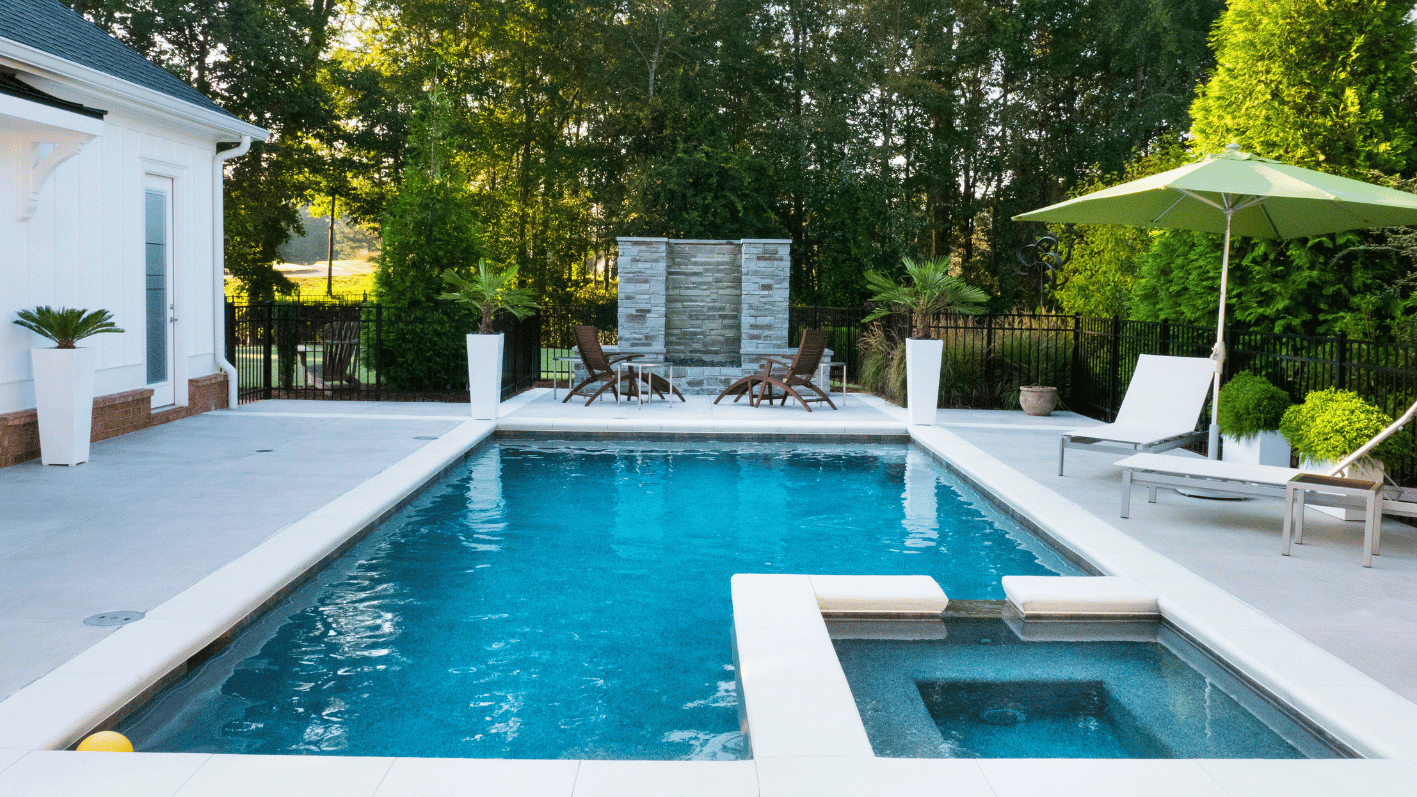A swimming pool offers exercise, fun, and relaxation, but also requires diligent upkeep. Poor maintenance can quickly lead to the growth of algae, bacteria, and debris. Consistent care keeps the water clear and extends the life of the equipment. So, here’s a complete guide to effective swimming pool maintenance.
Daily and Weekly Care
The easiest way to manage a pool is to keep a routine. Daily tasks are small but important. Here’s what you can do:
- Skim the water surface with a net to remove leaves, bugs, and floating debris.
- Check the water level to ensure it hasn’t dropped too low or risen too high, as this can impact pump performance.
- Once a week, brush the pool walls and floor to prevent algae buildup, and then vacuum to collect any dirt that has settled to the bottom.
Testing the water should also be a weekly habit. Pool test kits measure pH levels, chlorine, and alkalinity. The ideal pH should sit between 7.2 and 7.6. Meanwhile, chlorine, which disinfects the water, should stay in the range of 1.0 to 3.0 parts per million. Balancing these elements ensures swimmers’ comfort and prevents damage to pool liners and tiles.
The Importance of Filtration
The filter system is the core of your pool. It keeps water moving, removes dirt, and spreads chemicals evenly. There are three main types: sand, cartridge, and diatomaceous earth (DE).
Sand filters catch particles as water flows through sand. Cartridge filters use a fabric cartridge that you can easily clean or replace. DE filters trap even the tiniest particles for the best filtration.
No matter which type you have, clean your filters regularly. For cartridges, this means every few weeks. For sand and DE filters, every few months is usually enough.
How long you run the pump is important. Running it for 8 to 12 hours each day usually circulates all the water, but the exact time depends on your pool size and the weather. Keeping the water moving helps stop algae from growing.
Chemical Balance and Shock Treatment
Even with perfect filtration, water chemistry remains a key anchor in pool maintenance. Beyond chlorine and pH, monitor alkalinity and calcium hardness. Alkalinity buffers and stabilizes pH. Calcium prevents plaster damage and etching. Unbalanced water may cause cloudiness, scaling, or metal corrosion.
Regular chlorine might not be enough after heavy use, rain, or if algae appears. Use a shock treatment, which means adding a higher dose of chlorine or a non-chlorine oxidizer, every one to two weeks during swimming season to keep the pool clean.
Seasonal Maintenance
Seasonal needs vary. In summer, test and clean more often. In autumn, address falling leaves and consider a cover. In cold climates, winterize by lowering the water, clearing pipes, and covering the pool until spring.
Caring for Equipment and Surroundings
Inspect ladders, lights, diving boards, and drains for safety. Clean the deck to limit debris. Store covers and chemicals properly: in a cool, dry, ventilated area, and away from direct sunlight.
Final Thoughts
Many owners handle daily care, but professionals offer comprehensive services, including deep cleaning, leak detection, and equipment maintenance. Professional help once or twice a year can prevent costly repairs.
At first, swimming pool maintenance can feel like a lot of work, but regular routines make it easier and more satisfying. Clean water keeps everyone safe, balanced chemicals protect your equipment, and checking things often helps you avoid problems. A well-maintained pool is more than just good looks. It gives everyone a safe, healthy, and fun place to swim.


Leave A Comment